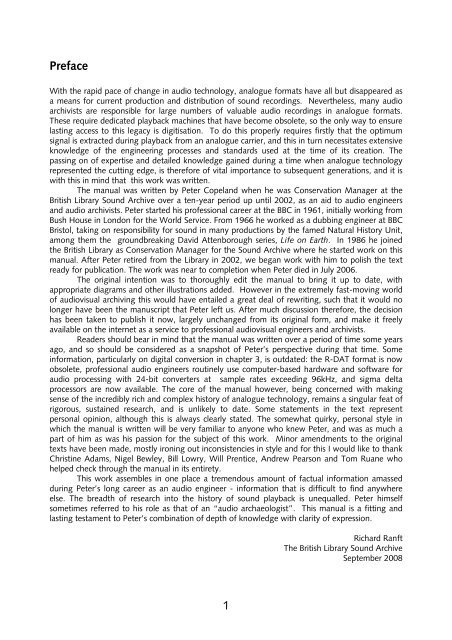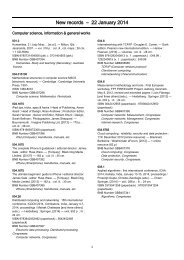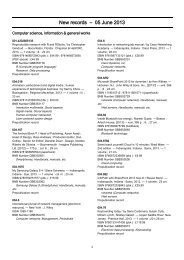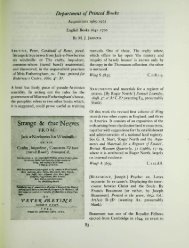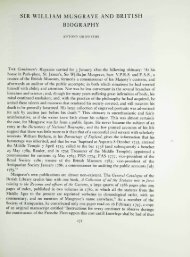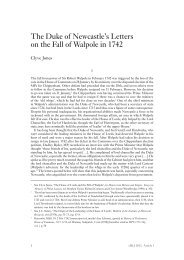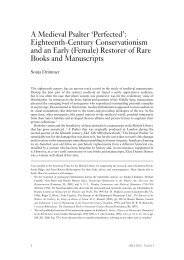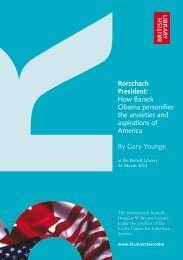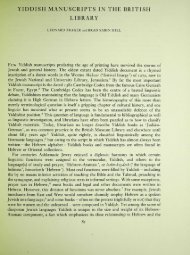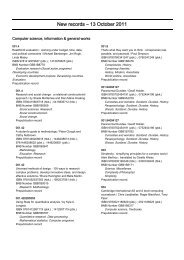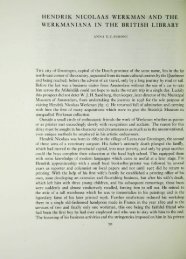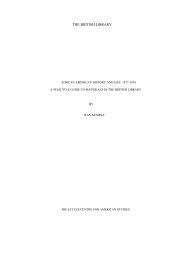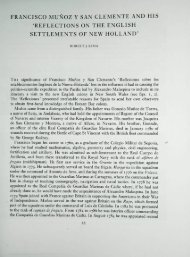MANUAL OF ANALOGUE SOUND RESTORATION ... - British Library
MANUAL OF ANALOGUE SOUND RESTORATION ... - British Library
MANUAL OF ANALOGUE SOUND RESTORATION ... - British Library
You also want an ePaper? Increase the reach of your titles
YUMPU automatically turns print PDFs into web optimized ePapers that Google loves.
Preface<br />
With the rapid pace of change in audio technology, analogue formats have all but disappeared as<br />
a means for current production and distribution of sound recordings. Nevertheless, many audio<br />
archivists are responsible for large numbers of valuable audio recordings in analogue formats.<br />
These require dedicated playback machines that have become obsolete, so the only way to ensure<br />
lasting access to this legacy is digitisation. To do this properly requires firstly that the optimum<br />
signal is extracted during playback from an analogue carrier, and this in turn necessitates extensive<br />
knowledge of the engineering processes and standards used at the time of its creation. The<br />
passing on of expertise and detailed knowledge gained during a time when analogue technology<br />
represented the cutting edge, is therefore of vital importance to subsequent generations, and it is<br />
with this in mind that this work was written.<br />
The manual was written by Peter Copeland when he was Conservation Manager at the<br />
<strong>British</strong> <strong>Library</strong> Sound Archive over a ten-year period up until 2002, as an aid to audio engineers<br />
and audio archivists. Peter started his professional career at the BBC in 1961, initially working from<br />
Bush House in London for the World Service. From 1966 he worked as a dubbing engineer at BBC<br />
Bristol, taking on responsibility for sound in many productions by the famed Natural History Unit,<br />
among them the groundbreaking David Attenborough series, Life on Earth. In 1986 he joined<br />
the <strong>British</strong> <strong>Library</strong> as Conservation Manager for the Sound Archive where he started work on this<br />
manual. After Peter retired from the <strong>Library</strong> in 2002, we began work with him to polish the text<br />
ready for publication. The work was near to completion when Peter died in July 2006.<br />
The original intention was to thoroughly edit the manual to bring it up to date, with<br />
appropriate diagrams and other illustrations added. However in the extremely fast-moving world<br />
of audiovisual archiving this would have entailed a great deal of rewriting, such that it would no<br />
longer have been the manuscript that Peter left us. After much discussion therefore, the decision<br />
has been taken to publish it now, largely unchanged from its original form, and make it freely<br />
available on the internet as a service to professional audiovisual engineers and archivists.<br />
Readers should bear in mind that the manual was written over a period of time some years<br />
ago, and so should be considered as a snapshot of Peter’s perspective during that time. Some<br />
information, particularly on digital conversion in chapter 3, is outdated: the R-DAT format is now<br />
obsolete, professional audio engineers routinely use computer-based hardware and software for<br />
audio processing with 24-bit converters at sample rates exceeding 96kHz, and sigma delta<br />
processors are now available. The core of the manual however, being concerned with making<br />
sense of the incredibly rich and complex history of analogue technology, remains a singular feat of<br />
rigorous, sustained research, and is unlikely to date. Some statements in the text represent<br />
personal opinion, although this is always clearly stated. The somewhat quirky, personal style in<br />
which the manual is written will be very familiar to anyone who knew Peter, and was as much a<br />
part of him as was his passion for the subject of this work. Minor amendments to the original<br />
texts have been made, mostly ironing out inconsistencies in style and for this I would like to thank<br />
Christine Adams, Nigel Bewley, Bill Lowry, Will Prentice, Andrew Pearson and Tom Ruane who<br />
helped check through the manual in its entirety.<br />
This work assembles in one place a tremendous amount of factual information amassed<br />
during Peter’s long career as an audio engineer - information that is difficult to find anywhere<br />
else. The breadth of research into the history of sound playback is unequalled. Peter himself<br />
sometimes referred to his role as that of an “audio archaeologist”. This manual is a fitting and<br />
lasting testament to Peter’s combination of depth of knowledge with clarity of expression.<br />
1<br />
Richard Ranft<br />
The <strong>British</strong> <strong>Library</strong> Sound Archive<br />
September 2008


